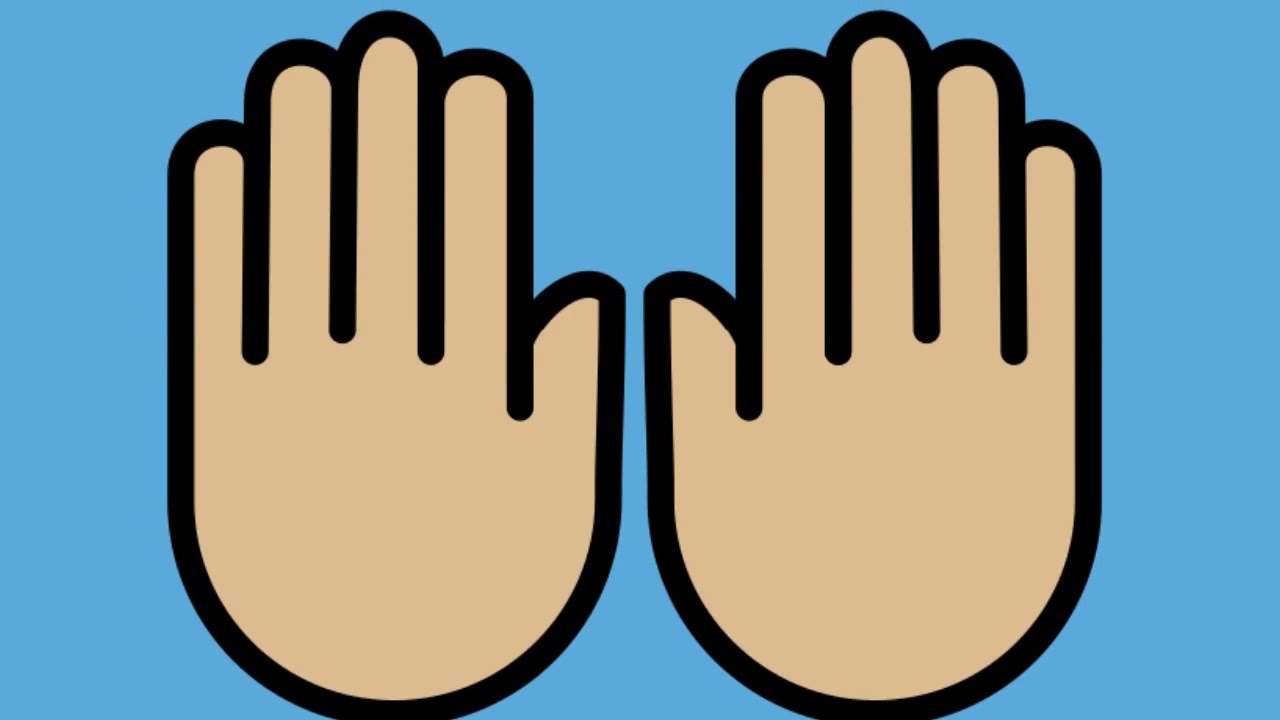If you are an avid user of social media, you have probably encountered the raised hands emoji 🙌. This popular emoji has become ubiquitous in online communication and is often used to convey a variety of emotions and sentiments. In this article with Impeccable Nest, we will delve deeper into the 🙌 meaning and understand why it has become an integral part of our digital language.

What Is The 🙌 Meaning?
The 🙌 emoji has taken on a variety of meanings online, but it’s most commonly used to represent:
Celebration
The act of raising both hands straight up in the air is a powerful and dynamic gesture that has been used across cultures and time periods to express a sense of triumph, success, and celebration. Whether it’s an athlete crossing the finish line, a musician performing on stage, or a person receiving good news, the act of raising both hands in the air is a natural and instinctive response to moments of joy and achievement.
In today’s digital world, this gesture has been captured and immortalized in the form of the 🙌 emoji, which has quickly become a popular symbol of triumph and celebration across various online platforms and social media sites. The emoji features two hands raised high in the air, palms facing outward, as if to say “look what we’ve accomplished!”
People often use the 🙌 emoji to express feelings of excitement, pride, and happiness when something positive happens in their lives, whether it’s achieving a personal goal, celebrating a milestone, or simply experiencing a moment of pure joy. When paired with text like “We did it!” or “Hooray!”, the emoji becomes a powerful tool for commemorating these occasions and sharing them with others.
One of the strengths of the 🙌 emoji lies in its universality; no matter where you are or what culture you come from, the act of raising both hands in the air is a recognizable expression of triumph and success. By using the emoji, people can easily connect with others from different backgrounds and share in the joy of each other’s victories.
In addition to its celebratory connotations, the 🙌 emoji also carries a sense of unity and solidarity. When multiple people raise their hands together, it creates a powerful visual image of a group coming together to celebrate a shared victory or accomplishment. This sense of camaraderie and connection is especially important in today’s world, where people often feel isolated and disconnected from one another.
Overall, the 🙌 emoji is a simple but powerful symbol of triumph, success, and celebration that has quickly become a beloved part of our digital lexicon. By capturing the universal gesture of raising both hands in the air, the emoji allows people from all walks of life to connect and share in the joys of life’s happy moments.
Praise and Gratitude
The 🙌 emoji is a popular symbol used in online communications to convey various sentiments, including appreciation, praise, and gratitude. This emoji features two hands raised in the air with palms facing upwards, providing an energetic and enthusiastic appearance.
One of the significant meanings attributed to this emoji is praising someone or expressing thanks. People often send the 🙌 icon along with messages like “Thanks a million!” or “You’re the best!” as a way of showing their appreciation and applauding someone’s work or support. With just a quick visual symbol, this emoji allows people to recognize others’ efforts and contributions, which can be especially helpful in digital conversations where tone and context may be challenging to convey.
In some contexts, the 🙌 emoji can also be used to express excitement and celebration. People might use it to congratulate someone on a job well done, celebrate a milestone, or express enthusiasm about an upcoming event. The raised hands can convey a sense of joy and elation, making this emoji a favorite among those who love to spread positivity and uplift others.
Excitement
The 🙌 emoji is a popular hand gesture used to convey enthusiasm, excitement, and eagerness. This symbol consists of two hands raised high above the head with palms facing outward and fingers splayed wide open. It has become a ubiquitous part of digital communication and is commonly used on social media platforms, messaging apps, and other forms of online communication.
When someone uses the 🙌 emoji, it is usually to indicate their excitement about something or to show their anticipation for a particular event or activity. For instance, if someone is going on vacation, they might include the 🙌 emoji in their post to express their eagerness and excitement. In this context, the emoji serves as a visual cue that amplifies the emotional impact of the message.
Similarly, if someone is eagerly anticipating a concert, they might use the 🙌 emoji to convey their excitement and enthusiasm. The symbol acts as a shorthand way of expressing emotion and can help to emphasize the importance of the event. In some cases, multiple 🙌 emojis may be used to further amplify the intensity of the feeling, indicating that the person is really looking forward to the experience.
Beyond its use in personal communication, the 🙌 emoji has also taken on a broader cultural significance. It is frequently used in memes, often accompanied by humorous captions or commentary. In this context, the symbol may serve as a way of poking fun at the idea of excessive enthusiasm or over-the-top excitement.
Spiritual Praise
The raised hands emoji, 🙌, has come to symbolize various meanings across different contexts and cultures. In religious contexts, it is often associated with reverence, praise, and worship. This association can be found in various faiths such as Christianity, Judaism, Islam, Hinduism, and Buddhism, among others.
In Christianity, for instance, raising hands during prayer or worship is a common practice that signifies surrendering oneself to God and acknowledging His sovereignty. It is seen as a physical expression of the heart’s desire to connect with God and offer praise and thanks. Similarly, in Judaism, the act of raising hands is used during prayer to show respect and submit oneself to the divine presence.
Islam, on the other hand, associates the raised hands gesture with the Salah or formal prayer. It is used to signify the beginning and end of each posture during prayer, such as standing, bowing, and prostration. The raised hands position is also commonly used during the recitation of the Takbir, which is an expression of the greatness and power of Allah.
In Hinduism, the raised hands gesture is known as “anjali mudra,” which is used in various spiritual practices, including meditation, yoga, and worship. The gesture involves bringing both hands together and placing them at the heart center, signifying the union of the individual self with the divine.
While the raised hands emoji has traditionally been associated with religious contexts, its usage has evolved to include secular contexts as well. In recent years, social media users have embraced the emoji as a way to express excitement, celebration, and gratitude. This usage has become particularly popular on platforms like Twitter and Instagram, where users employ the emoji when posting affirmations, expressing support, or offering congratulations.
However, some people of faith prefer using the 🙏 emoji instead of the 🙌 icon when communicating online, reserving the latter for religious use. The 🙏 emoji is often used to signify prayer, gratitude, and humility, making it a more appropriate choice for spiritual expressions. Moreover, some believe that using the 🙌 icon in secular contexts can dilute its religious significance.
🙌 in Different Skin Tones
Like many other emojis, the 🙌 icon comes in 5 different skin tones through the skin tone modifier options:
- 🙌🏻 Light skin tone
- 🙌🏼 Medium-light skin tone
- 🙌🏽 Medium skin tone
- 🙌🏾 Medium-dark skin tone
- 🙌🏿 Dark skin tone
Applying skin tone modifiers allows people to represent diversity in race and ethnicity when using this emoji. The ability to customize the 🙌 icon is especially significant because raising hands is a common gesture across cultures worldwide.
How to use 🙌 emoji?
The most common usage of the 🙌 emoji is to express excitement, enthusiasm or celebration. It can be used to congratulate someone on their achievements, to cheer them up during difficult times, or to simply rejoice in something exciting. Some examples of how to use the 🙌 emoji would be:
- “I just got promoted at work! 🙌”
- “We won the game! 🙌”
- “Thanks for your help, you’re the best! 🙌”
Examples of 🙌 emoji
The 🙌 emoji is widely used across various social media platforms, including Facebook, Instagram, Twitter, Snapchat and WhatsApp. Here are some examples of how people use it in their everyday conversations:
- “Congratulations on graduating! 🎓🙌”
- “I can’t wait to see you! It’s been too long! 🙌🏻”
- “We did it! Our project got accepted! 🙌🏽”
Conclusion
The 🙌 emoji has become a popular symbol to express joy, excitement, appreciation, and gratitude in our digital conversations. While it may seem like a simple symbol, it carries significant meaning and has cultural significance in some parts of the world. As with any other symbol, it is important to use the 🙌 emoji appropriately and be mindful of the context in which it is being used.
So next time you feel like expressing your happiness or pride towards someone or something, don’t hesitate to use the 🙌 emoji. It’s a perfect way to show your enthusiasm and appreciation for the good things in life.

I am Lois Mullins, an enthusiast in emoji deciphering. Over the recent years, I have continuously updated and delved deep into the knowledge of emoji decryption.
I take pride in my extensive knowledge of decoding emojis, particularly in the Emoji Meanings of Impeccable Nest . I believe that a profound understanding of decoding these symbols can be beneficial for individuals in comprehending the nuances of language when someone sends them an emoji.
By grasping the nuances and potential misinterpretations of these emotional symbols, I am confident that people can use them more effectively to express their emotions and build stronger connections with others. I am committed to sharing my knowledge with the community so that everyone can harness the power of emojis in their everyday communication.
If you are seeking an experienced individual ready to share their passion for emoji deciphering, I hope for the opportunity to collaborate and learn from others. Together, we can create innovative and unique communication experiences!
